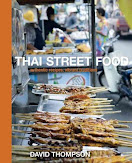Bangkok offers local and international cuisine you find the restuarant lists to make your choice where to wine and dine.
A GARDEN A house decked out in Victorian style fronted by a lush garden for al fresco dining.
Style: European
Tel: 0-2260-4992 Address: 64 Sukhumvit Soi 51, Bangkok 10110........................................................................................................................................................
A L'ETAGELocated in a small complex of shops and eating places, shaded by trees and plants, this cosy restaurant has a Parisian ambience with its comfortable seating and chic decor.
Read an overview
Style: French
Tel: 0-2662-6336 Address: 28-28/1 Sukhumvit Soi 39, Bangkok 10110........................................................................................................................................................
AMAPOLAAmapola is a gem of a tropical mini-resort with a garden terrace, comfy dining room and a chic and breezy poolside bar.
Style: Japanese
Tel: 0-2258-7077 Address: 72/1 Sukhumvit Soi 51, Bangkok 10110........................................................................................................................................................
ANTONIO'S
Small but cosy, wood, black granite and marble set the decorative tone while soft
lighting defines the ambience.
Style: Italian
Tel: 0-2258-4247, 08-1733-9073 Address: 59/1 Soi Sawasdee, Sukhumvit Soi 31, Bangkok
10110
........................................................................................................................................................
ATHENA Mustard-coloured walls cloister rooms offset with white pillars, lending a Greek look and
feel to this neat, tidy establishment. Evocative Greek ballads, candle-lit tables and
displays of flowers and souvenirs create a tranquil mood.
Style: Greek
Tel: 0-2392-7644 Address: 594 Soi Ekamai, Sukhumvit Soi 63, Bangkok 10110........................................................................................................................................................
BACCOA large place decked out with paintings of clowns and Bacchus, the greek god of wine, the
restaurant exudes a light and fun atmosphere.
Style: Italian
Tel: 0-2662-4538 Address: 535/1 Sukhumvit Soi 53, Bangkok 10110........................................................................................................................................................
BASIL Hip, stylish designing makes this small, modern restaurant the place to unwind amid a
colour scheme of white, black and golden. One wall displays Thai lacquerware. Dining
tables include hammered-chrome tabletops. Big plants and a wood floor lend simplicity to
the ambience.
Style: Thai
Tel: 0-2649-8366 Address: SHERATON GRANDE SUKHUMVIT, 250 SUKHUMVIT ROAD, BANGKOK 10110........................................................................................................................................................
BASILICO Managing director Sergio Forte, from Rimini on the Adriatic, has borrowed a building
design often seen in his home region whereby copious glass allows diners to feel almost
out of doors. Actual outdoor seating is available as is a semi-enclosed area where
smoking is permitted.
Style: Italian
Tel: 0-2662-2323 Address: 8 SUKHUMVIT SOI 33, BANGKOK 10110........................................................................................................................................................
BECCOFINO Beccofino's distinctive facade of louvred panels directly fronts Soi Thonglor, while
inside the main dining room as well as smaller seating areas s t off by archways are
enhanced with an understated interior featuring copper, white brick and rich wood accents.
Style: Italian
Tel: 0-2392-1881-2 Address: 146 Soi Thonglor, Sukhumvit Soi 55, Bangkok 10110........................................................................................................................................................
BED SUPPER CLUB Space-bubble fantasy meets ultra-chic restaurant. Dining area with white glow allows you
to pose on large bedstyle seating.
Style: International
Tel: 0-2651-3537 Address: 26 Sukhumvit Soi 11, Bangkok 10110........................................................................................................................................................
BEI OTTO In its 22nd year, Bei Otto continues to be one of Bangkok's favourite German eating-
houses with a genuine Black Forest feel to it.
Style: German/European
Tel: 0-2262-0892, 0-2260-0869 Address: 1 Sukhumvit Soi 20, Bangkok 10110........................................................................................................................................................
BELLA NAPOLI Small, funky and intimate, this is a place for a casual break to enjoy some fast Italian
food while cruising Sukhumvit Road. Santanastyle music ricochets off walls adorned by
small photographs and memorabilia, which bestow a neighborhood friendliness to the room.
Style: Italian
Tel: 0-2712-5422, 0-2259-0405 Address: 3/3 SUKHUMVIT SOI 31, BANGKOK 10110........................................................................................................................................................
BLUE SPICE Blue Spice has a modern, coffee shop-style setting with clean white walls accented by a
wooden backdrop.
Style: International
Tel: 0-2365-8487 Address: 304 Sukhumvit Soi 55, Bangkok 10110........................................................................................................................................................
BOURBON STREET The only place in town to find cajun/creole cuisine, Bourbon Street with its rattan
furniture, decorative New Orleans memorabilia and orange-washed walls conveys a
Louisianan flair.
Style: Mexican/Creole/Cajun
Tel: 0-2259-0328-9 Address: Washington Square, 29/4-6 Sukhumvit Soi 22, Bangkok 10110........................................................................................................................................................
BRIDGE A stunning, geometric glass structure houses this modern and elegant eatery. the club-
style ambience looks to attract a trendy crowd.
Style: Italian
Tel: 0-2258-1590Address: 26 Sukhumvit Soi 20, Bangkok 10110........................................................................................................................................................
CAFE BUONGIORNO Set in a beautiful house, this cafe-like restaurant offers seating in air-conditioned
comfort or al fresco in a lush garden.
Style: Italian
Tel: 0-2662-3471 Address: 22 Sukhumvit Soi 33, Bangkok 10110........................................................................................................................................................
CHESA Set in a large house and decorated with upholstered benches, chairs and tables with red
and white tablecloths, Chesa exudes a cosy Swiss charm. Style: Swiss
Tel: 0-2261-6650 Address: 5 Sukhumvit Soi 20, Bangkok 10110........................................................................................................................................................
CHIAn eclectic, fanciful, avant-garde restaurant with animals and flowers painted on the
wall and a mounted, stuffed, white-feathered bird on display. Various rooms have unique
decor including overlapping, empty picture frames, slices of mirrors, feathered boas and
other zany items.
Style: International
Tel: 0-2381-7587/9 Address: H1, 998 Soi Thonglor, Sukhumvit Soi 55, Bangkok 10110........................................................................................................................................................
CHINE CHINE Chic and chi-chi, Chine Chine is a modern Cantonese restaurant on the second floor of the
hip haven of Bangkok's young professionals, J Avenue. Stylish Victorian meets with modern
Chinese interior decorated with oversized chairs and crafted-tile wall in a modern pattern.
Style: Chinese
Tel: 0-2712-6541-2 Address: 2ND FLOOR,J AVENUE, SOI THONGLOR 15,SUKHUMVIT SOI 55,BANGKOK 10110........................................................................................................................................................
COFFEE BEANS BY DAO This Thai-style brasserie located in Ruamrudee Village has a relaxed family dining
atmosphere with seating on three floors.
Style: Thai/International
Tel: 0-2254-7780, 0-2254-7117 Address: 20/12-15 Ruamrudee Village, Soi Ruamrudee, Bangkok 10330


















































